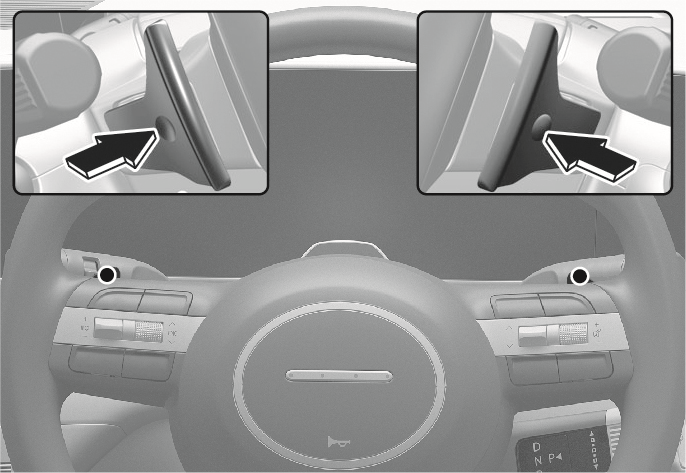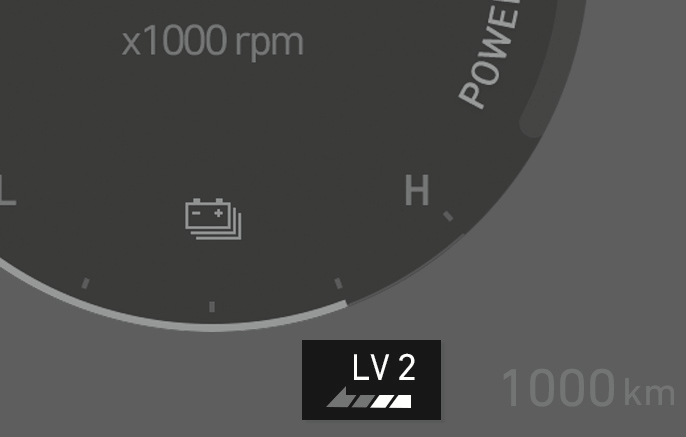Using the regenerative braking system

2C_PaddleShift
-
Pull the left paddle shifter (-) once to raise the regenerative braking intensity level by 1. It increases decelerating intensity.
-
Pull the right paddle shifter (+) once to lower the regenerative braking intensity level by 1. It decreases decelerating intensity.
-
Pull and hold the left paddle shifter (-) for over 0.5 seconds to keep raising the regenerative braking intensity level. Keeping hold of the paddle shifter stops the vehicle and the regenerative braking intensity level appears as "MAX" on the instrument cluster.
-
Whilst the smart recuperation system is ON: Pull and hold the right paddle shifter (+) for over 1 second to turn off the smart recuperation system. (For more information, refer to the “Smart regeneration system” section in this chapter.)
-
Whilst the smart recuperation system is OFF: Pull and hold the right paddle shifter (+) for over 1 second to turn on the smart recuperation system. The regenerative braking level appears as "AUTO".

2C_RehabilitationBrakingStepInfo
The selected regenerative braking level appears on the instrument cluster.
-
When the vehicle is turned on, the regenerative braking level starts with 0 and only operates with the vehicle in D (Drive).
-
When the gear is shifted to P (Park), R (Reverse) or N (Neutral), the regenerative braking is deactivated, when shifted to D (Drive) the regenerative braking operates as level 0.
-
When ABS and ESC are operating, the regenerative braking is deactivated.
-
A difference in deceleration occurs depending on the vehicle speed, even in the same regenerative barking level. The difference is noticeable in city driving, but there is not much difference during high speed driving.
The vehicle does not come to a complete stop with the regenerative braking level 1-3 by operating the paddle shifter. The vehicle moves slowly with the regenerative braking level decreasing when the vehicle speed is about 10 km/h. Press the brake pedal to stop the vehicle.